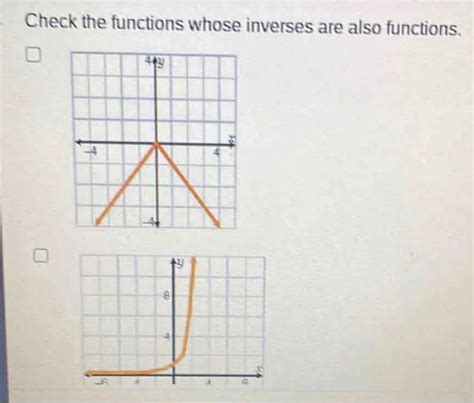In mathematics, a function is a relation that assigns to each element of a set a unique element of another set. The inverse of a function is a function that undoes the original function. In other words, if (f(x)) is a function, then its inverse, (f^{-1}(x)), is the function such that (f^{-1}(f(x)) = x) and (f(f^{-1}(x)) = x).

Not all functions have inverses. For example, the function (f(x) = x^2) does not have an inverse because it is not one-to-one. This means that there are some values of (x) that are assigned to more than one value of (y). For example, (f(1) = 1) and (f(-1) = 1). Therefore, there is no unique value of (x) that can be assigned to (y = 1).
However, many functions do have inverses. For example, the function (f(x) = x + 1) has an inverse, (f^{-1}(x) = x – 1). This is because for every value of (x), there is only one value of (y) that is assigned to it.
To determine whether a function has an inverse, we can use the horizontal line test. This test states that a function has an inverse if and only if every horizontal line intersects the graph of the function at most once.
Here are some examples of functions that have inverses:
- Linear functions: (f(x) = mx + b)
- Quadratic functions: (f(x) = ax^2 + bx + c) (where (a \neq 0))
- Exponential functions: (f(x) = e^x)
- Logarithmic functions: (f(x) = \log_a x) (where (a > 0) and (a \neq 1))
Here are some examples of functions that do not have inverses:
- Absolute value function: (f(x) = |x|)
- Square root function: (f(x) = \sqrt{x})
- Cube function: (f(x) = x^3)
Inverse functions have many applications in mathematics and other fields. Here are a few examples:
- Solving equations: Inverse functions can be used to solve equations. For example, to solve the equation (f(x) = y), we can use the inverse function (f^{-1}(x)) to find the value of (x) that corresponds to the value of (y).
- Finding the domain and range of a function: The inverse of a function can be used to find the domain and range of the function. The domain of a function is the set of all possible values of the input variable, and the range of a function is the set of all possible values of the output variable. The domain of the inverse function is the range of the original function, and the range of the inverse function is the domain of the original function.
- Graphing functions: The inverse of a function can be used to graph the function. To graph the inverse function, we can simply reflect the graph of the original function over the line (y = x).
Inverse functions are an important tool in mathematics. They have many applications in solving equations, finding the domain and range of a function, and graphing functions. By understanding the concept of inverse functions, you can expand your mathematical knowledge and skills.
- Inverse function
- One-to-one function
- Horizontal line test
- Domain
- Range
- Graph
| Function | Inverse Function |
|---|---|
| (f(x) = x + 1) | (f^{-1}(x) = x – 1) |
| (f(x) = x^2) | (f^{-1}(x) = \pm\sqrt{x}) (only for (x \geq 0)) |
| (f(x) = e^x) | (f^{-1}(x) = \ln x) |
| (f(x) = \log_a x) | (f^{-1}(x) = a^x) |
| Function | Has Inverse? |
|---|---|
| (f(x) = x + 1) | Yes |
| (f(x) = x^2) | No (for all real numbers) |
| (f(x) = | x |
| (f(x) = \sqrt{x}) | No (for all real numbers) |
| (f(x) = x^3) | No |
Q: What is an inverse function?
A: An inverse function is a function that undoes the original function. In other words, if (f(x)) is a function, then its inverse, (f^{-1}(x)), is the function such that (f^{-1}(f(x)) = x) and (f(f^{-1}(x)) = x).
Q: How do I know if a function has an inverse?
A: You can use the horizontal line test to determine whether a function has an inverse. This test states that a function has an inverse if and only if every horizontal line intersects the graph of the function at most once.
Q: What are some applications of inverse functions?
A: Inverse functions have many applications in mathematics and other fields, including solving equations, finding the domain and range of a function, and graphing functions.
Q: Can all functions be inverted?
A: No, not all functions can be inverted. A function can only be inverted if it is one-to-one, which means that each input value corresponds to a unique output value.
Q: How do I find the inverse of a function?
A: To find the inverse of a function, you can use the following steps:
1. Replace (f(x)) with (y).
2. Swap the roles of (x) and (y).
3. Solve for (y).
4. Replace (y) with (f^{-1}(x)).
